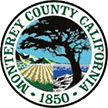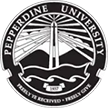Before the Internet, Deaf and hard-of-hearing (hh) people communicated mostly through text-based messaging or video chat. The Internet now provides the Deaf/hh community more options to communicate than ever before.
For example, on Skype, Zoom, Microsoft Teams, and other similar video formats the Deaf/hh community can use video chat which is accompanied by an audio call where two people can see each other's facial expressions as well as hear what is being said at all times.
Video is not just a convenience — it has included Deaf and hard-of-hearing in conversations that would otherwise be impossible without this type of connection!
It was not until the last 25 years that Deaf people could even have access to things such as sign language dictionaries. With the Internet, Deaf users could access information on Deaf history, Deaf culture, sign language dictionaries, and Deaf schools.
These benefits were not available to Deaf people before the development of the Internet.
E-learning websites for Deaf children provide deaf and hard-of-hearing students with lessons increasing access to education for deaf people.
The Internet helped the Deaf to learn sign language and communicate more often. Over time, Internet sign language dictionaries enabled users to click on a video of a sign and get an immediate definition.
Since the earliest days of the Internet, deaf users could use Internet relay chat (IRC) and instant messaging to communicate with each other and sign to each other.
Later came Internet video relay service (IVRS) allowing Deaf/hh to use a webcam and Internet captioning technology to start real-time video phone calls to each other.
Connecting computers around the world changed sign language in many positive ways. First, users are now able to sign with one another regardless of their geographical location.
Deaf/hh who were once restricted to text or interpreters due to the lack of sign language signers in their communities are now able to sign from all over the world.
As a result of the Internet, more non-Deaf and hard-of-hearing people can read sign language.
The early 2000s brought the world affordable broadband Internet. Improved accessibility has increased ASL users utilizing video chat software. The Deaf/hh community has received surprising benefits.
Non-deaf people are learning to sign as they socialize online with Deaf/hh members. How? It could be due to Deaf/hh users, who might be afraid to interact with others in person. They are using Internet chat rooms and video chat rooms to communicate with fellow Deaf and hard-of-hearing Internet users in a non-threatening environment. That environment is an equally accessible place for non-Deaf/hh users.
One area of social media that has embraced the ASL community is TikTok. It has grown at an exponential rate with the Deaf/hh community riding its wave.
Despite TikTok users' slang expression asl which means "as hell", (distinctly lower case), the American Sign Language community has thrived with ASL widely recognized and respected.
As a byproduct of ASL's recognition, TikTok has introduced ASL to many ASL learners well outside the Deaf/hh community. The non-ASL community on TikTok has gone beyond adding ASL to their performances as a novelty, although most typically have not yet included captions. ASL is commonly used in comments on ASL-related videos, which are primarily created by ASL TikTok creators.
Sign language is becoming a stronger language through the Internet and the younger TikTok generation is leading the way. Non-Deaf/hh users are text messaging ASL emojis learned from fellow TikTok users. More people are learning how to use ASL to communicate.
It's easy to understand why TikTok has a channel for ASL. ASL is not only seen in ASL-related videos, but also TikTok users’ profile descriptions and their user names. ASL hashtags are also used in ASL users’ bios, comments, and ASL-related videos.
ASL has become easier for Deaf/hh users to access due to Deaf/hh creators publishing ASL closed captioned videos. The comments left are typically created in ASL with ASL emojis.
Consider the case of Tikstar and self-described Deaf film-maker Chrissy Marshall. Find her on TikTok as Chrissy Can't Hear You. Her hearing loss is due to enlarged vestibular aqueduct syndrome which originates during fetal development and manifests during postnatal development along with the congenital defect Mondini Dysplasia. Chrissy leveraged her fame and chronicled her road to cochlear implants in a self-produced documentary. Would any of this be possible without the Internet? Since the short TikTok (below) she posted in 2019, Chrissy has amassed over 1 million followers on TikTok and over 50 thousand subs on YouTube.
https://www.tiktok.com/@chriss...
Hashtags are why Deaf/hh users now easily locate ASL-related videos. The ASL zeitgeist has even gone meta with hashtags such as #simcom which refers to simcomming. Without going down a rabbit hole, simcomming is a nuanced description of simultaneously signing and speaking.
American Sign Language hashtags are typically found in an ASL creator's TikTok user name, bio, profile description, and throughout user comments.
The Internet has not only given exposure to the Deaf/hh community but also provided a platform for Deaf/hh users to create their own videos and gain fame.
American Sign Language celebrities have gained fame from ASL-related content which includes closed captions. Deaf/hh influencers and celebrities like comedian and entertainer Sean Berdy stand out. Others include:
Cheyenna Clearbrook: Public Figure
Dana Vlog: YouTuber
Bill Vicars: Professor
Jessica Flores: Comedian
Rikki Poynter: Activist
Rogan Shannon: LGBTQ Interpreter
Breaking Deaf Taboos with Comedian and Advocate Jessica Flores | NowThis
Jessica Flores used comic-relief in 2018 to break out on YouTube with Breaking Deaf Taboos (see above).
These American sign language celebrities are known for their ASL content which has helped them gain a huge ASL TikTok following. ASL celebrities have found an American Sign Language-friendly platform to share their American Sign Language videos on TikTok.
Cheyenna Clearbrook was a featured member in the 2020 Netflix reality series Deaf U.
Actor Sean Berdy is known on TikTok for his funny American Sign Language videos and memes. Rogan Shannon describes himself as a queer Deaf interpreter and part-time YouTuber with hundreds of reviews published. Full-time Tenured Professor and Deaf/hh Bill Vicars is another part-time YouTuber living a life dedicated to assisting in all things Deaf/hh.
Overall, TikTok has given exposure and voice to the Deaf community. The American Sign Language community on TikTok thrives with celebrities gaining their own fame on TikTok.
Sign language tools and services are greatly improved due to the Internet, now offering Telephonic Interpreting and VRI services. Not only can sign languages be seen instantly, but it also allows sign language dictionaries and spell checkers to be created. The sign language community has also increased due to the Internet in social media.


No matter what your needs may be, we can and are ready to assist you now. We have translators and interpreters standing by 24/7.

CIT's interpreter is such a rockstar, and it’s so great to have him as a lead interpreter for our Board meetings. About Our Interpreters 
Thank you for always being able to handle emergency interpreting assignments with ease. About Urgent Requests 
Thank you for always being able to handle emergency interpreting assignments with ease. About Urgent Requests 
Your translation rates are more competitive than other language service providers I used in the past. About Pricing 

Professionalism matters at CIT. We respond to request inside 24 hours.







